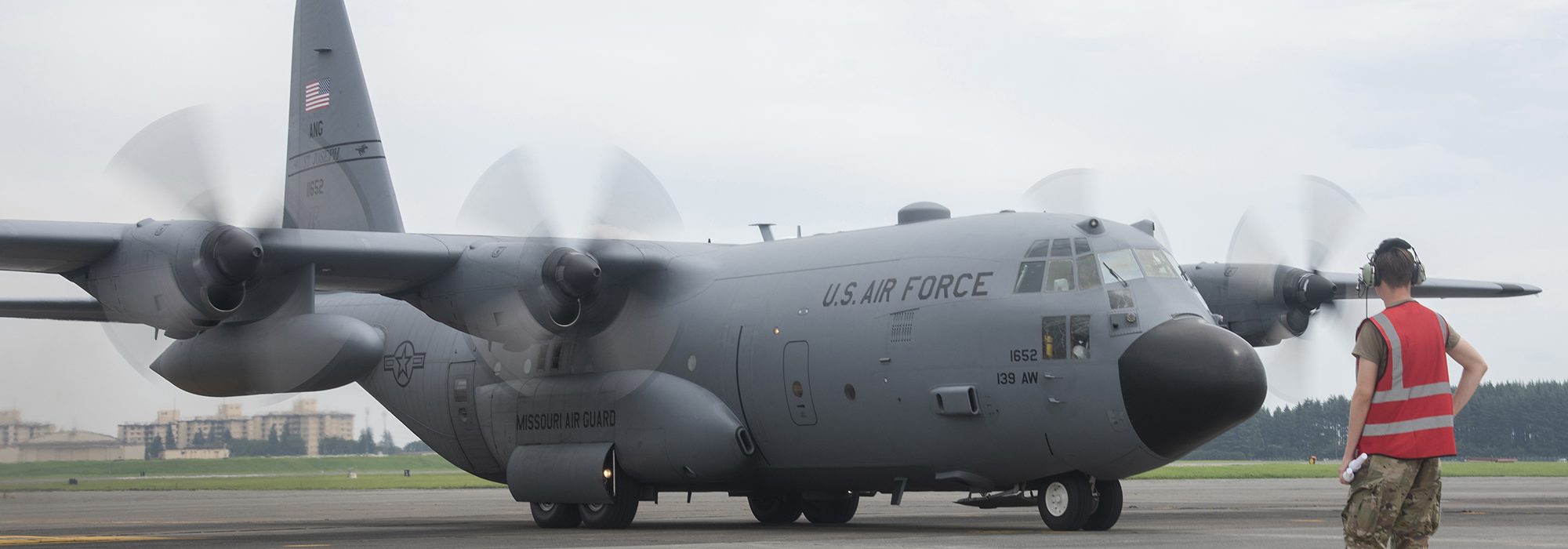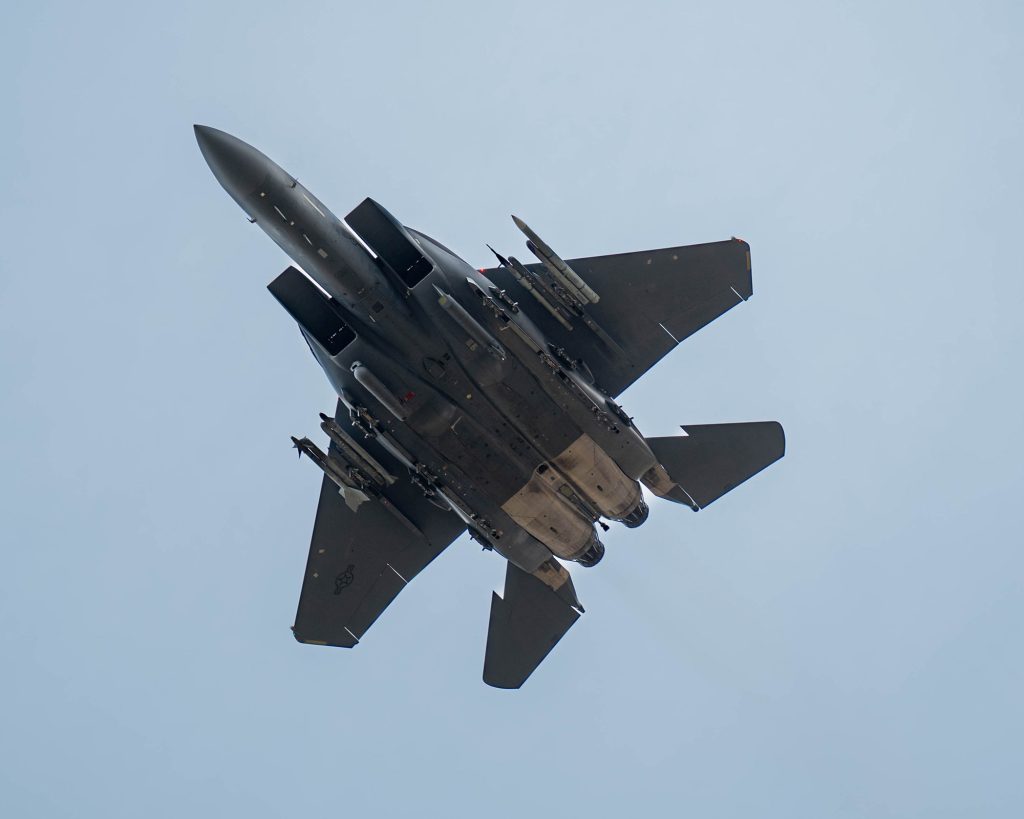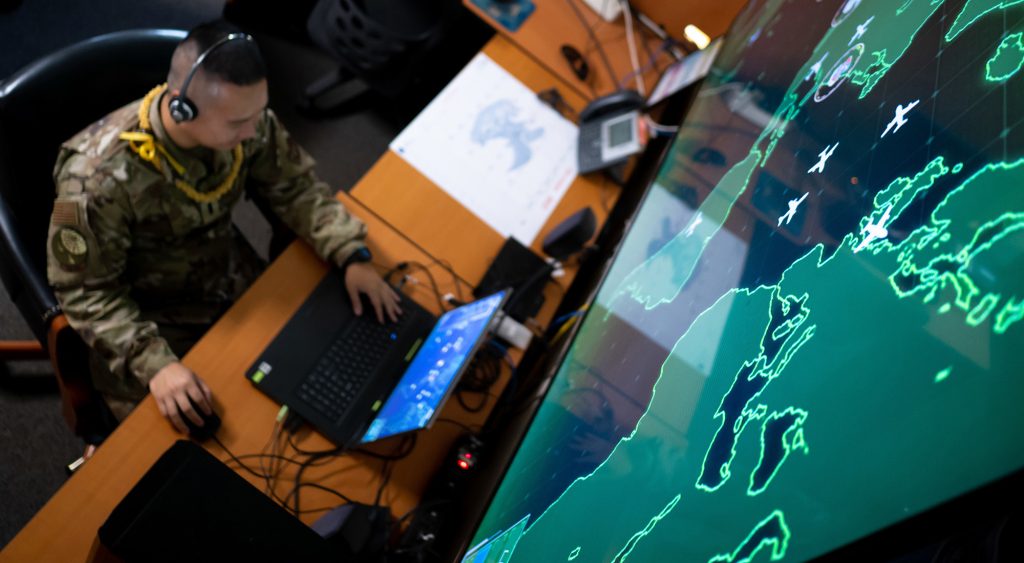Thousands Join In on Massive Mobility Exercise
By Chris Gordon
The U.S. Air Force, the other military services, and allied forces kicked off Mobility Guardian 2023 in July, the most ambitious iteration of the biennial air mobility exercise ever. Spread out across the Indo-Pacific area of operations and led by Air Mobility Command, the highly anticipated logistics exercise tests U.S. preparedness for long-range, distributed operations in the vast Indo-Pacific region.
“This year’s MG23 reflects an evolution from the exercise’s previous three U.S.-based iterations and aims to understand and overcome distance to deliver the mobilization, deployment, and sustainment functions that the joint force, allies, and partners depend on to respond to challenges worldwide,” AMC announced as the event got underway.
The exercise “will turn planned integration into operational integration within the theater,” said Gen. Mike Minihan, the head of Air Mobility Command. Mobility Air Forces (MAFs) will stretch “to meet future demands and protect shared international interests with our allies and partners.”
Australia, Canada, France, Japan, New Zealand, and the United Kingdom took part in the challenge.
Planning for Mobility Guardian started more than a year ago. In its fourth iteration, the 2023 edition is the largest “full-spectrum readiness exercise” in AMC’s 31-year history. Some 3,000 AMC Airmen and Guardians participated, supporting a wider force of 15,000 participants, with AMC acting as the “cohesive glue” throughout the Pacific, the command said.
“AMC’s role in enabling the meaningful maneuver of forces throughout the theater underscores the necessity of logistics and realistic interoperability in the region,” the command said. Airlift, aerial refueling, aeromedical evacuation, command and control, and humanitarian and disaster assistance missions were exercised over the two and a half weeks.
Minihan, previously the deputy commander at U.S. Indo-Pacific Command, got in trouble last winter for a spirited memo to his forces pumping them up to be prepared for a possible fight with China. With the U.S. and its allies working out the kinks in the still-new Agile Combat Employment strategy, in which U.S. combat air forces disperse from large established bases to small, remote operating locations, delivery of food, fuel, parts, and ammunition logistics will be the key to success—or failure.
“This is a proving ground for the MAF’s new status quo tested through the application of flexible and agile concepts,” said Lt. Col. Jake Parker, Mobility Guardian exercise director.
Combined, Joint Team
Headquartered at Joint Base Pearl Harbor-Hickam, Hawaii, the Exercise Control Group brought together of Air Force, Joint, and allied planners, connecting a diverse breadth of functions.
“The collaboration and connection formed alongside our DOD teammates and our allies and partners during planning and execution will pay dividends today, tomorrow and into our unquestionably complex future,” said Parker.
Planners from a U.S. Marine Air and Ground Task Force (MAGTF) leveraged Mobility Guardian and integrated their own exercise into the schedule. “The Marine Corps happens to be performing exercises in theater at the same time and we needed a lift in order to move our people out into the theater and conduct our exercises,” explained Sgt. Heather Dilcher, 3rd Marine Aircraft Wing.
The 60th Air Mobility Wing from Travis Air Force Base, Calif., offered a C-5M Super Galaxy, with the capacity to carry 281,000 pounds more than 2,500 nautical miles without aerial refueling.
Noting that this “is my first time working jointly,” Dilcher said she’d gotten all the support the Corps needed. The MAGTF planning team and the 60th AMW coordinated the move, including removing and folding helicopter rotors to ensure multiple aircraft could fit inside the Super Galaxy.
Not everything was expected to go so smoothly over the two weeks of nonstop operations, of course. Previewing the exercise at AFA’s Warfare Symposium in March, Minihan made clear Mobility Guardian is a learning experience, not a graduation exercise.
“Some things won’t go perfect,” he said. “We’ll go back and we’ll work harder to get it, and we’ll close gaps as quick as we can.”
USAF Seeks to Halve F-15E Force to Pave Way for Modernization
By Chris Gordon
The Air Force plans to cut its F-15E fleet to 99 aircraft by 2028—cutting more than 100 Strike Eagles in an ongoing sacrifice of current fighting capacity in the hopes of accelerating future modernization and capability.
Air Force budget documents released in May show USAF’s plan to upgrade 99 F-15Es with the Eagle Passive Active Warning Survivability System (EPAWSS), an electronic warfare suite on the newer F-15EX designed to help the fourth-generation fighters evade sophisticated integrated air defenses to stand in and fight, rather than remain at standoff distances. But to do that, the Air Force also intends to retire 119 F-15Es, which average more than 30 years of age.
The F-15Es fleet is equipped with two engine types, with the newer models powered by Pratt & Whitney F100-PW-229 jet engines and the older ones powered by earlier F100-PW-220s. The Air Force intends to keep only the jets with the newer, -229 engines.
Asked about the plan by Sen. Ted Budd (R-N.C.) during his confirmation hearing to become Chairman of the Joint Chiefs of Staff, Air Force Chief of Staff Gen. Charles Q. Brown Jr. said his aim must be to “balance capability and capacity.”
Budd, whose state includes Seymour Johnson Air Force Base, N.C.—one of five F-15E bases nationwide—questioned whether the Air Force was sacrificing too much in capacity.
Brown acknowledged it is a difficult choice. In budget justification documents, the Air Force states: “Prioritizing modernization efforts to keep pace with near-peer competitors requires difficult trade-offs with existing aircraft inventories and programs. … The Air Force determined the best mix for the fighter fleet calls for maintaining an F-15E fleet of 99 aircraft with the more powerful engine (F100-PW-229) and shifting resources to maximize procurement of newer fighters and capabilities.”
EPAWSS will replace an “analog, federated [EW] system with a next-generation, digital, fully integrated EW suite that enables the F-15 to operate in a modern threat environment,” according to the Air Force Life Cycle Management Center.
Congress could block the retirements, as they did with planned cuts to the A-10 force for years. The Air Force is already rapidly drawing down its F-15C/D fleet, having worn those aircraft out beyond their anticipated service lives. Retiring the F-15Es is still a future years plan, with no cuts anticipated before fiscal 2025 at the earliest. With the Air Force acquiring new F-35s at a rate of about 48 per year, plus 12 to 24 F-15EXs, the capacity can be made up over time.
In total, the Air Force plans to buy 104 F-15EX Eagle IIs, including 24 in fiscal 2024.
Meanwhile, USAF plans to retire 57 F-15C/D models in fiscal 2024.
“As we do this, it’s not just the platforms themselves, it’s the other aspects of our command and control in terms of bringing some reconnaissance capabilities [in which] we will continue to invest,” Brown said. The key, he added, is to strengthen the remaining fleet by making them more capable and “more relevant and combat capable as we go forward.”
Time to Improve Classified Information Regulations
By David Roza
The Department of Defense completed a 45-day review of classified information programs, policies, and procedures in the wake of a massive security leak, determining that the “overwhelming majority” of personnel with access to classified materials are “trustworthy,” but more clarity is needed in the regulations governing classified data, Secretary of Defense Lloyd J. Austin III said in a July 5 memo.
The review followed the arrest of Airman 1st Class Jack Teixeira, a Massachusetts Air National Guardsman, who allegedly shared a trove of classified documents on a group chat website, covering topics from insights into the war in Ukraine to information relating to the Indo-Pacific and Middle East theaters of operation.
The review “identified areas where we can and must improve accountability measures to prevent the compromise of [Classified National Security Information], to include addressing insider threats,” Austin wrote.
A senior defense official briefing reporters on background said the review focused on “department policies and procedures.”
Of particular concern, the official said, was inconsistencies in the way low-level security managers interact with the Defense Counterintelligence and Security Agency (DCSA), which is charged with protecting such information. More two-way dialogue is essential for continuously vetting individuals for trustworthiness.
“As we’ve transitioned to continuous vetting, we need to get to that local area security manager and make sure they understand what is available to them, what information they can have on their personnel, how important that accountability relationship is,” the official said.
Continuous monitoring supplements full-scale security clearance, recognizing that people’s behaviors can change gradually, and that someone verified as trustworthy years ago may not be trustworthy tomorrow. Beyond fostering a dialogue with DCSA, the Department of Defense also needs to clarify its standards for handling classified information, the official said. These standards, which vary between organizations and between different varieties of classified information, can be difficult to keep straight, the official said.
“As someone who’s read a lot of DOD policies, they are not the clearest documents always,” the official noted. “I am not surprised that as they’ve layered on top of each other … and as this complex classified information environment has grown, that there’s a need to make sure that we are looking at them from a stand-back distance to make sure they’re understandable and that our workforce can use them to the best of their ability.”
Ambiguity leads to inconsistencies in how standards are applied. For example, the official cited a requirement for top secret control officers, who Air Force regulations say are responsible for “receiving, dispatching, and maintaining accountability of all top secret documents.” But while public-facing policy states that Top Secret Control Officers are optional, the official said, other policies state that they are mandatory.
“Then if you get into what is a reportable offense and who you have to report it to … some of that is also confusing,” the official said. “If you’re a local-level security manager managing a joint unit for example, who do you report it to, how do you do all of that?”
Clear regulations are especially needed to keep pace with the increasing number of locations handling classified materials.
Security breaches come about not necessarily because of a single point of failure, but because many factors come together. The 45-day review provided a chance “to make sure that we looked at this as quickly as possible to make sure that we made the improvements that we could quickly,” the official said, even as the Teixeira investigation continues.
That kind of self-assessment is in line with industry best practices for mitigating insider threats. Daniel Costa, technical manager of enterprise threat and vulnerability management at The National Insider Threat Center at Carnegie Mellon’s Software Engineering Institute, told Air & Space Forces Magazine in April, that there is no single answer to this kind of challenge.
“There’s an inherent risk that comes along with doing business,” he said. “What we’re talking about is human nature, and thinking about insider threats as an inherent risk to organizations requires real careful planning and organization-wide participation to reduce that risk to acceptable levels.”
Besides the 45-day military-wide review, the Department of the Air Force is conducting a review of its policies regarding classified information and an Inspector General review of security practices at Teixeira’s unit, the 102nd Intelligence Wing.
In his June 30 memo, Austin directed all Department of Defense component heads to take a range of steps: ensure that Department of Defense personnel are assigned to a Security Management Office; ensure Sensitive Compartmented Information Facilities (SCIFs) comply with Intelligence Community Directive requirements; ensure all SCIFs and Special Access Program Facilities (SAPFs) are accounted for in a centralized tracking system; confirm that use of personal and portable electronic devices is prohibited in those facilities; that Top Secret Control Officers are required for top secret information; and that a Joint Management Office for Insider Threat and Cyber Capabilities is established for monitoring threats and user activity across all military networks.
To enhance communication with the DSCA, Austin directed the Undersecretary of Defense for Intelligence and Security, Ronald S. Moultrie, to analyze training needs and to examine and/or improve the way continuous vetting data is shared and reported, sharing that information within the military. Austin set a series of deadlines from July 31 to Dec. 31 for those steps to be completed.
Yet Austin also said it’s important not to overcorrect, given that the vast majority of personnel willingly and diligently comply. DOD must avoid imposing unnecessarily restrictive policies on information sharing that can undermine mission effectiveness.
“The department is mindful of the need to balance information security with [the] requirement to get the right information to the right people at the right time to enhance our national security,” DOD stated in a fact sheet about the security review.


